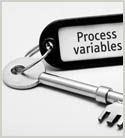KnowledgeCenters Six Sigma KnowledgeCenter Six Sigma Courses
Six Sigma teams design and conduct experiments to investigate the relationships between input variables and response variables. By controlling and changing the input variables and observing the effects on the response variables, a Six Sigma team gains a deep understanding of these relationships. After determining what and how much needs to be changed to meet the desired improvement, teams generate solution ideas based on the best combination of input variables' settings to optimize the response, and then the ideas are tested, implemented, and validated. Later in the Control stage, efforts are made to keep the improved processes, products, or services under statistical control and to retain the gains.
This course explores full and fractional factorial designs and the DOE process. In addition, it teaches how to select, test, and validate solutions using a variety of analysis, screening, and testing tools commonly used in Six Sigma. This course is aligned with the ASQ Certified Six Sigma Black Belt certification exam and is designed to assist learners as part of their exam preparation.
This course explores full and fractional factorial designs and the DOE process. In addition, it teaches how to select, test, and validate solutions using a variety of analysis, screening, and testing tools commonly used in Six Sigma. This course is aligned with the ASQ Certified Six Sigma Black Belt certification exam and is designed to assist learners as part of their exam preparation.
| Objectives |
|---|
Full Factorial Experiments
Fractional Factorial Experiments
One-factor Experiments
|


